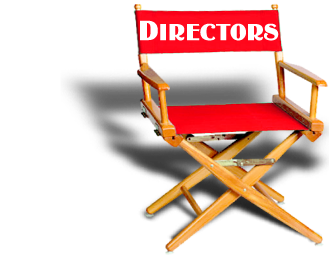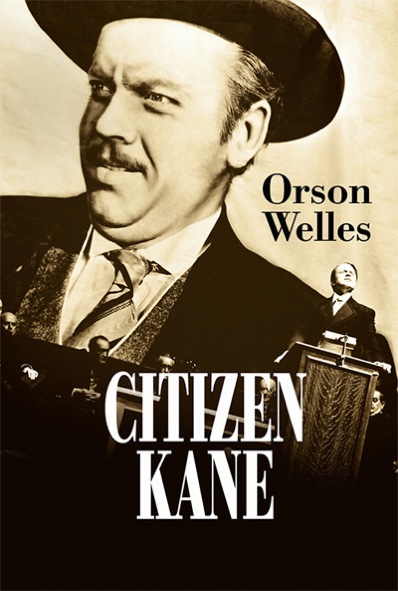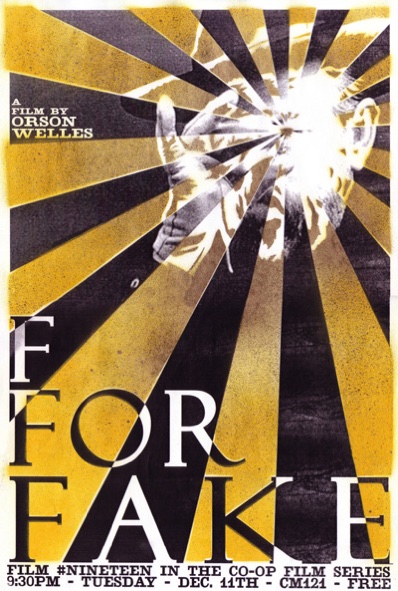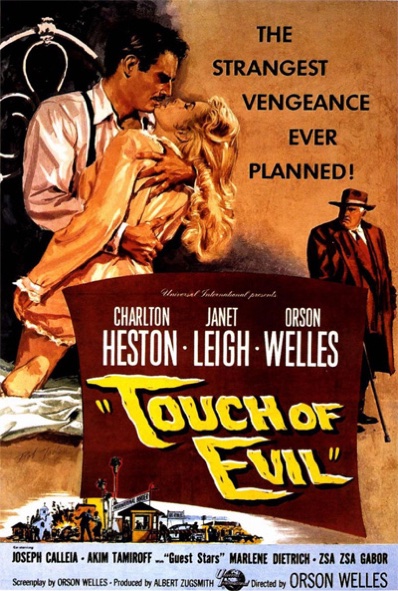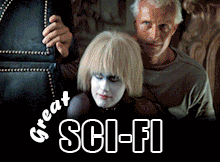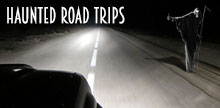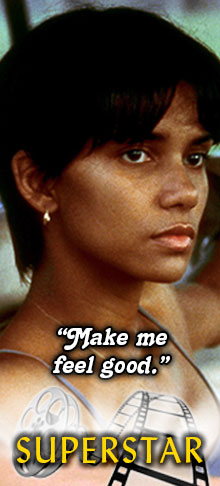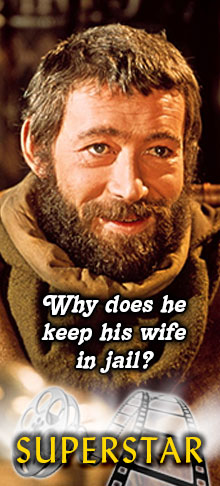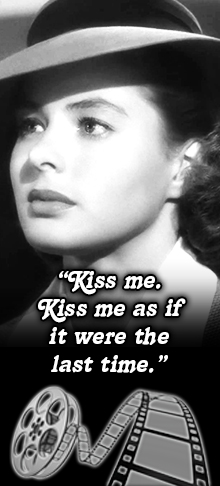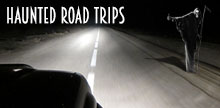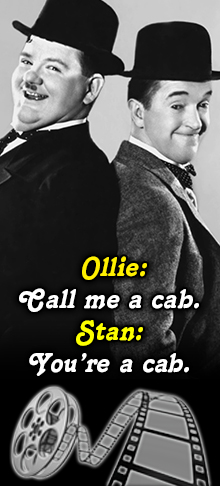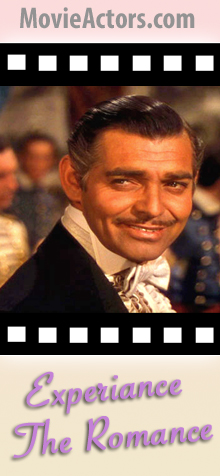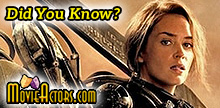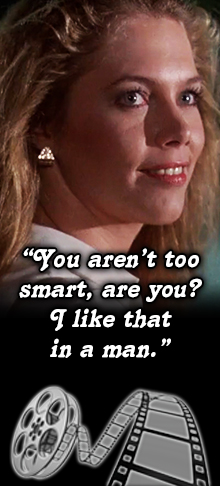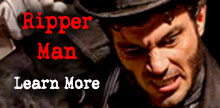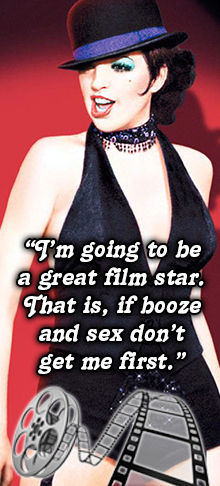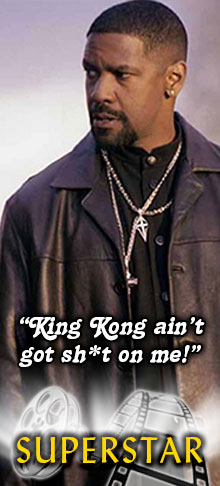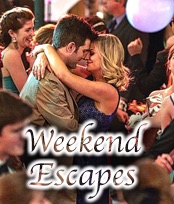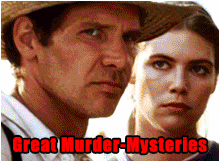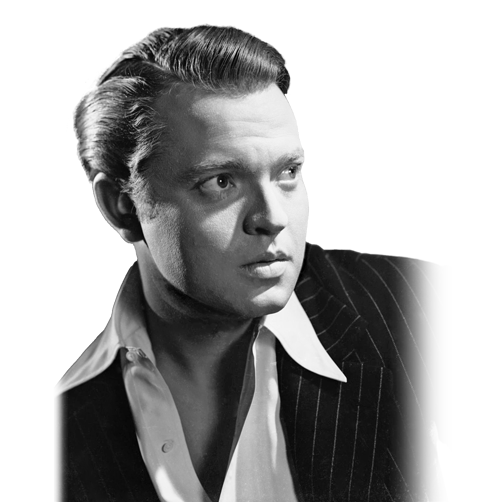
Orson Welles
Best known for his artistic innovations in theatre, radio, and film as an actor, director, writer, and producer, Orson Welles’s greatest achievements are the so-called “panic broadcast” of “The War of the Worlds” in 1938, and the making of “Citizen Kane” (1941), which consistently ranks as one of the all-time greatest films in cinematic history.
George Orson Welles was born May 6, 1915, in Kenosha, Wisconsin, son of Richard Head Welles and Beatrice Ives Welles. He was named after his paternal great-grandfather, the influential Kenosha attorney Orson S. Head, and his brother George Head.
Despite his family’s affluence, Welles encountered hardship in childhood. His parents separated and moved to Chicago in 1919. His father, who made a fortune as the inventor of a popular bicycle lamp, became an alcoholic and stopped working. Welles’s mother, a pianist, played during lectures by Dudley Crafts Watson at the Art Institute of Chicago to support her son and herself; the oldest Welles boy, “Dickie,” was institutionalized at an early age because he had learning difficulties. Beatrice died of hepatitis in a Chicago hospital on May 10, 1924, aged 42, just after Welles’s ninth birthday.
“During the three years that Orson lived with his father, some observers wondered who took care of whom”, wrote biographer Frank Brady.
“In some ways, he was never really a young boy, you know,” said Roger Hill, who became Welles’s teacher and lifelong friend.
Welles briefly attended public school in Madison, Wisconsin, enrolled in the fourth grade. In September of 1926, he entered the Todd Seminary for Boys, an expensive independent school in Woodstock, Illinois, that his older brother, Richard Ives Welles, had attended ten years before but was expelled for misbehavior. At Todd School Welles came under the influence of Roger Hill. Hill provided Welles with an ad hoc educational environment that proved invaluable to his creative experience, allowing Welles to concentrate on subjects that interested him. Welles performed and staged theatrical experiments and productions there.
On December 28, 1930, when Welles was 15, his father died of heart and kidney failure at the age of 58, alone in a hotel in Chicago. Shortly before this, Welles had told him that he would stop seeing him, believing it would prompt his father to refrain from drinking. As a result, Orson felt guilty because he believed his father had drunk himself to death because of him.
Following graduation from Todd in May 1931, Welles was awarded a scholarship to Harvard University, while his mentor Roger Hill advocated he attend Cornell College in Iowa. Rather than enrolling, he chose travel. He studied for a few weeks at the Art Institute of Chicago with Boris Anisfeld, who encouraged him to pursue painting.
Welles would occasionally return to Woodstock, the place he eventually named when he was asked in a 1960 interview, “Where is home?” Welles replied, “I suppose it’s Woodstock, Illinois, if it’s anywhere. I went to school there for four years. If I try to think of a home, it’s that.”
Film/directorial Career
RKO Radio Pictures president George Schaefer offered Welles what is widely considered the greatest contract offered to a filmmaker, untried or otherwise. Engaging him to write, produce, direct and perform in two motion pictures, the contract subordinated the studio’s financial interests to Welles’s creative control, and granted Welles the right of final cut. The agreement was bitterly resented by Hollywood studios.
RKO rejected Welles’s first two movie proposals, but agreed on the third offer — Citizen Kane. Welles co-wrote, produced and directed the film, and performed the lead role. Welles conceived the project with screenwriter Herman J. Mankiewicz. Mankiewicz based the original outline on the life of William Randolph Hearst, whom he knew socially and came to hate after being ejected from Hearst’s circle.
After agreeing on the storyline and character, Welles supplied Mankiewicz with 300 pages of notes and put him under contract to write the first draft screenplay under the supervision of John Houseman. Welles wrote his own draft, then drastically condensed and rearranged both versions and added scenes of his own. Welles was accused of unfairly minimizing Mankiewicz’s contribution to the script, but Welles countered the attacks by saying, “At the end, naturally, I was the one making the picture, after all — who had to make the decisions. I used what I wanted of Mank’s and, rightly or wrongly, kept what I liked of my own.”
Welles’s project attracted some of Hollywood’s best technicians, including cinematographer Gregg Toland. For the cast, Welles primarily used actors from his Mercury Theatre. Filming Citizen Kane took ten weeks.
Hearst’s newspapers barred all reference to Citizen Kane and applied enormous pressure on Hollywood to force RKO to scuttle the film. RKO chief George Schaefer received a cash offer from MGM’s Louis B. Mayer and other major studio executives if he would destroy the negative and existing prints of Citizen Kane.
While waiting for Citizen Kane to be released, Welles directed the original Broadway production of Native Son, a drama written by Paul Green and Richard Wright based on Wright’s novel. Starring Canada Lee, the show ran March 24 – June 28, 1941, at the St. James Theatre. The Mercury Production was the last time Welles and Houseman worked together.
Citizen Kane was given a limited release and received overwhelming critical praise. It was voted the best picture of 1941 by the National Board of Review and the New York Film Critics Circle. The film racked up nine Academy Award nominations but won only for Best Original Screenplay, shared by Mankiewicz and Welles. Variety reported that block voting by screen extras deprived Citizen Kane of Oscars for Best Picture and Best Actor (Welles), and similar prejudices likely accounted for the film winning no technical awards.
The delay in the film’s release and uneven distribution contributed to mediocre box office earnings. After it ran its course theatrically, Citizen Kane was retired to the vault in 1942. In postwar France, however, the film’s reputation grew after it was seen for the first time in 1946. In the United States, it began to be re-evaluated after it began to appear on television in 1956. That year it was also re-released theatrically, and film critic Andrew Sarris described it as “the great American film” and “the work that influenced the cinema more profoundly than any American film since Birth of a Nation.” Citizen Kane has long been hailed as one of the greatest films ever made.
Welles’s second film for RKO was The Magnificent Ambersons, adapted by Welles from the Pulitzer Prize-winning novel by Booth Tarkington. Prior to production, Welles’s contract was renegotiated, revoking his right to control the final cut.
Throughout the shooting of the film Welles was also producing a weekly half-hour radio series, The Orson Welles Show. Many of the Ambersons cast participated in the CBS Radio series.
At RKO’s request, Welles worked on an adaptation of Eric Ambler’s spy thriller, Journey into Fear, co-written with Joseph Cotten. In addition to acting in the film, Welles was the producer. Direction was officially credited to Norman Foster. Welles later said that they were in such a rush that the director of each scene was determined by whoever was closest to the camera.
In July 1941, Welles conceived It’s All True as an omnibus film mixing documentary and docufiction in a project that emphasized the dignity of labor and celebrated the cultural and ethnic diversity of North America. It was to have been his third film for RKO, following Citizen Kane (1941) and The Magnificent Ambersons (1942). Duke Ellington was put under contract to score a segment with the working title, “The Story of Jazz”, drawn from Louis Armstrong’s 1936 autobiography, Swing That Music. Armstrong was cast to play himself in the brief dramatization of the history of jazz performance, from its roots to its place in American culture in the 1940s. “The Story of Jazz” was to go into production in December 1941.
In 1942 RKO Pictures underwent major changes under new management, taking control of Ambersons and editing the film into what the studio considered a commercial format. Welles’s attempts to protect his version failed.
In the fall of 1945 Welles began work on The Stranger (1946), a film noir drama about a war crimes investigator who tracks a high-ranking Nazi fugitive to an idyllic New England town. Edward G. Robinson, Loretta Young and Welles star.
Producer Sam Spiegel initially planned to hire director John Huston, who had rewritten Anthony Veiller’s screenplay. When Huston entered the military, Welles was given the chance to direct and prove himself able to make a film on schedule and under budget — something he was so eager to do that he accepted a disadvantageous contract. One of its concessions was that he would defer to the studio in any creative dispute.
The Stranger was Welles’s first job as a film director in four years. He was told that if the film was successful he could sign a four-picture deal with International Pictures, making films of his own choosing. Welles was given some degree of creative control, and he endeavored to personalize the film and develop a nightmarish tone. He worked on the general rewrite of the script and wrote scenes at the beginning of the picture that were shot but subsequently cut by producers. He filmed in long takes that largely thwarted the control given to editor Ernest J. Nims under the terms of the contract.
The Stranger was the first commercial film to use documentary footage from the Nazi concentration camps. Welles had seen the footage as a correspondent and discussion moderator at a UN Conference.
Completed a day ahead of schedule and under budget, The Stranger was the only film made by Welles to have been a bona fide box office success upon release. Its cost was $1.034 million; 15 months later it had grossed $3.216 million. Within weeks of the completion of the film, International Pictures backed out of its promised four-picture deal with Welles. No reason was given, but the impression was left that The Stranger would not make money.
The film that Welles was obliged to make in exchange for Harry Cohn’s help in financing the stage production Around the World was The Lady from Shanghai, filmed in 1947 for Columbia Pictures. Intended as a modest thriller, the budget skyrocketed after Cohn suggested that Welles’s then-estranged second wife Rita Hayworth co-star.
Cohn disliked Welles’s rough-cut, particularly the confusing plot and lack of close-ups. He ordered extensive editing and re-shoots. After heavy editing by the studio, approximately one hour of Welles’s first cut was removed, including much of a climactic confrontation scene in an amusement park funhouse. While expressing displeasure at the cuts, Welles was appalled particularly with the musical score. The film was considered a disaster in America at the time of release, though the closing shootout in a hall of mirrors has since become a touchstone of film noir. Not long after release, Welles and Hayworth finalized their divorce.
Prior to 1948, Welles convinced Republic Pictures to let him direct a low-budget version of Macbeth, which featured highly stylized sets and costumes, and a cast of actors lip-syncing to a pre-recorded soundtrack, one of many innovative cost-cutting techniques Welles deployed in an attempt to make an epic film from B-movie resources. The script, adapted by Welles, is a violent reworking of Shakespeare’s original, freely cutting and pasting lines into new contexts via a collage technique and recasting Macbeth as a clash of pagan and proto-Christian ideologies. Of all Welles’s post-Kane Hollywood productions, Macbeth is stylistically closest to Citizen Kane.
Republic initially trumpeted the film as an important work but decided it did not care for the Scottish accents and held up general release for almost a year after early negative press reaction, including Life’s comment that Welles’s film “doth foully slaughter Shakespeare.” Welles left for Europe, while co-producer and lifelong supporter Richard Wilson reworked the soundtrack. Welles returned and cut 20 minutes from the film at Republic’s request and recorded narration to cover some gaps. The film was decried as a disaster, although it did have influential fans in Europe.
During this time, Welles was channeling his money from acting jobs into a self-financed film version of Shakespeare’s play Othello. From 1949 to 1951, Welles worked on Othello, filming on location in Europe and Morocco. The film featured Welles’s friends, Micheál Mac Liammóir as Iago and Hilton Edwards as Desdemona’s father Brabantio. Suzanne Cloutier starred as Desdemona and Campbell Playhouse alumnus Robert Coote appeared as Iago’s associate Roderigo.
Filming was suspended several times as Welles ran out of funds and left for acting jobs. The American release prints had a flawed soundtrack, suffering from a drop-out of sound at every quiet moment (Welles’s daughter, Beatrice Welles-Smith, would eventually restore Othello in 1992 for a wide re-release). The restoration included reconstructing Angelo Francesco Lavagnino’s original musical score, which was originally inaudible, and adding ambient stereo sound effects, which were not in the original film. The restoration had a successful theatrical run in America.
Welles briefly returned to America to make his first appearance on television, starring in the Omnibus presentation of King Lear, broadcast live on CBS October 18, 1953. Directed by Peter Brook, the production costarred Natasha Parry, Beatrice Straight and Arnold Moss.
Welles’s next turn as director was the film Mr. Arkadin (1955), which was produced by his political mentor from the 1940s, Louis Dolivet. It was filmed in France, Germany, Spain and Italy on a very limited budget. Based loosely on several episodes of the Harry Lime radio show, it stars Welles as a billionaire who hires a man to delve into the secrets of his past. The film stars Robert Arden, who had worked on the Harry Lime series; Welles’s third wife, Paola Mori, whose voice was dubbed by actress Billie Whitelaw; and guest stars Akim Tamiroff, Michael Redgrave, Katina Paxinou and Mischa Auer. Frustrated by his slow progress in the editing room, producer Dolivet removed Welles from the project and finished the film without him. Eventually five different versions of the film would be released, two in Spanish and three in English. The version that Dolivet completed was retitled Confidential Report. In 2005 Stefan Droessler of the Munich Film Museum oversaw a reconstruction of the surviving film elements.
In 1955, Welles also directed two television series for the BBC. The first was Orson Welles’ Sketch Book, a series of six 15-minute shows featuring Welles drawing in a sketchbook to illustrate his reminiscences for the camera, and the second was Around the World with Orson Welles, a series of six travelogues set in different locations around Europe (such as Venice, the Basque Country between France and Spain, and England). Welles served as host and interviewer, his commentary including documentary facts and his own personal observations (a technique he would continue to explore in later works).
In 1956, Welles completed Portrait of Gina. The film cans would remain in a lost-and-found locker at the hotel for several decades, where they were discovered after Welles’s death.
In 1956, Welles returned to Hollywood, where he began filming a projected pilot for Desilu, owned by Lucille Ball and her husband Desi Arnaz, who had recently purchased the former RKO studios. The film was The Fountain of Youth, based on a story by John Collier. Originally deemed not viable as a pilot, it was not aired until 1958 — and won the Peabody Award for excellence.
Welles’s next feature film role was in Man in the Shadow for Universal Pictures in 1957, starring Jeff Chandler.
Welles stayed on at Universal to direct (and co-star with) Charlton Heston in the 1958 film Touch of Evil, based on Whit Masterson’s novel Badge of Evil. Originally only hired as an actor, Welles was promoted to director by Universal Studios at the insistence of Heston. The film reunited many actors and technicians with whom Welles had worked in Hollywood in the 1940s, including cameraman Russell Metty (The Stranger), makeup artist Maurice Seiderman (Citizen Kane), and actors Joseph Cotten, Marlene Dietrich and Akim Tamiroff. Filming proceeded smoothly, with Welles finishing on schedule and on budget, and the studio bosses praising the daily rushes. Nevertheless, after the end of production, the studio re-edited the film, re-shot scenes, and shot new exposition scenes to clarify the plot. Welles wrote a 58-page memo outlining suggestions and objections, stating that the film was no longer his version — it was the studio’s, but as such, he was still prepared to help with it.
In 1978, a longer preview version of the film was discovered and released.
As Universal reworked Touch of Evil, Welles began filming his adaptation of Miguel de Cervantes’ novel Don Quixote in Mexico, starring Mischa Auer as Quixote and Akim Tamiroff as Sancho Panza.
He continued shooting Don Quixote in Spain and Italy, but replaced Mischa Auer with Francisco Reiguera, and resumed acting jobs. In Italy in 1959, Welles directed his own scenes as King Saul in Richard Pottier’s film David and Goliath. In Hong Kong he co-starred with Curt Jürgens in Lewis Gilbert’s film Ferry to Hong Kong. In 1960, in Paris he co-starred in Richard Fleischer’s film Crack in the Mirror. In Yugoslavia he starred in Richard Thorpe’s film The Tartars and Veljko Bulajić’s Battle of Neretva.
Throughout the 1960s, filming continued on Quixote on-and-off as Welles evolved the concept, tone and ending several times. Although he had a complete version of the film shot and edited at least once, he would continue toying with the editing well into the 1980s, he never completed a version film he was fully satisfied with, and would junk existing footage and shoot new footage. (In one case, he had a complete cut ready in which Quixote and Sancho Panza end up going to the moon, but he felt the ending was rendered obsolete by the 1969 moon landings, and burned 10 reels of this version.) As the process went on, Welles gradually voiced all of the characters himself and provided narration. In 1992, the director Jesús Franco constructed a film out of the portions of Quixote left behind by Welles, though some of the film stock had decayed badly. While the Welles footage was greeted with interest, the post-production by Franco was met with harsh criticism.
In 1961, Welles directed In the Land of Don Quixote, a series of eight half-hour episodes for the Italian television network RAI. Similar to the Around the World with Orson Welles series, they presented travelogues of Spain and included Welles’s wife, Paola, and their daughter, Beatrice. Though Welles was fluent in Italian, the network was not interested in him providing Italian narration because of his accent, and the series sat unreleased until 1964, by which time the network had added Italian narration of its own. Ultimately, versions of the episodes were released with the original musical score Welles had approved, but without the narration.
In 1962, Welles directed his adaptation of The Trial, based on the novel by Franz Kafka and produced by Michael and Alexander Salkind. The cast included Anthony Perkins as Josef K, Jeanne Moreau, Romy Schneider, Paola Mori and Akim Tamiroff. While filming exteriors in Zagreb, Welles was informed that the Salkinds had run out of money, meaning that there could be no set construction. No stranger to shooting on found locations, Welles soon filmed the interiors in the Gare d’Orsay, at that time an abandoned railway station in Paris. Welles thought the location possessed a “Jules Verne modernism” and a melancholy sense of “waiting”, both suitable for Kafka. To remain in the spirit of Kafka Welles set up the cutting room together with the Film Editor, Frederick Muller (as Fritz Muller), in the old un-used, cold, depressing, station master office. The film failed at the box-office. Peter Bogdanovich would later observe that Welles found the film riotously funny. Welles also told a BBC interviewer that it was his best film. While filming The Trial, Welles met Oja Kodar, who later became his mistress and collaborator for the last 20 years of his life.
In 1966, Welles directed a film for French television, an adaptation of The Immortal Story, by Karen Blixen. Released in 1968, it stars Jeanne Moreau, Roger Coggio and Norman Eshley. The film had a successful run in French theaters. At this time Welles met Oja Kodar again, and gave her a letter he had written to her and had been keeping for four years; they would not be parted again. They immediately began a collaboration both personal and professional. The first of these was an adaptation of Blixen’s The Heroine, meant to be a companion piece to The Immortal Story and starring Kodar. Unfortunately, funding disappeared after one day’s shooting. After completing this film, he appeared in a brief cameo as Cardinal Wolsey in Fred Zinnemann’s adaptation of A Man for All Seasons—a role for which he won considerable acclaim.
In 1967, Welles began directing The Deep, based on the novel Dead Calm by Charles Williams and filmed off the shore of Yugoslavia. The cast included Jeanne Moreau, Laurence Harvey and Kodar. Personally financed by Welles and Kodar, they could not obtain the funds to complete the project, and it was abandoned a few years later after the death of Harvey. The surviving footage was eventually edited and released by the Filmmuseum München. In 1968 Welles began filming a TV special for CBS under the title Orson’s Bag, combining travelogue, comedy skits and a condensation of Shakespeare’s play The Merchant of Venice with Welles as Shylock. In 1969 Welles called again the Film Editor Frederick Muller to work with him re-editing the material and they set up cutting rooms at the Safa Palatino Studios in Rome. Funding for the show sent by CBS to Welles in Switzerland was seized by the IRS. Without funding, the show was not completed. The surviving film clips portions were eventually released by the Filmmuseum München.
Welles returned to Hollywood, where he continued to self-finance his film and television projects. While offers to act, narrate and host continued, Welles also found himself in great demand on television talk shows. He made frequent appearances for Dick Cavett, Johnny Carson, Dean Martin and Merv Griffin.
Welles’s primary focus during his final years was The Other Side of the Wind, an unfinished project that was filmed intermittently between 1970 and 1976. Written by Welles, it is the story of an aging film director (John Huston) looking for funds to complete his final film. The cast includes Peter Bogdanovich, Susan Strasberg, Norman Foster, Edmond O’Brien, Cameron Mitchell and Dennis Hopper. Financed by Iranian backers, ownership of the film fell into a legal quagmire after the Shah of Iran was deposed. While there have been several reports of all the legal disputes concerning ownership of the film being settled, enough disputes still exist to prevent its release.
In 1971, Welles directed a short adaptation of Moby-Dick, a one-man performance on a bare stage, reminiscent of his 1955 stage production Moby Dick—Rehearsed. Never completed, it was eventually released by the Filmmuseum München. He also appeared in Ten Days’ Wonder, co-starring with Anthony Perkins and directed by Claude Chabrol, based on a detective novel by Ellery Queen. That same year, the Academy of Motion Picture Arts and Sciences gave him an honorary award “For superlative artistry and versatility in the creation of motion pictures”. Welles pretended to be out of town and sent John Huston to claim the award, thanking the Academy on film. Huston criticized the Academy for awarding Welles, even while they refused to give Welles any work.
In 1973, Welles completed F for Fake, a personal essay film about art forger Elmyr de Hory and the biographer Clifford Irving. Based on an existing documentary by François Reichenbach, it included new material with Oja Kodar, Joseph Cotten, Paul Stewart and William Alland. An excerpt of Welles’s 1930s War of the Worlds broadcast was recreated for this film; however, none of the dialogue heard in the film actually matches what was originally broadcast.
In 1975, Welles narrated the documentary Bugs Bunny: Superstar, focusing on Warner Bros. cartoons from the 1940s. Also in 1975, the American Film Institute presented Welles with its third Lifetime Achievement Award (the first two going to director John Ford and actor James Cagney). At the ceremony, Welles screened two scenes from the nearly finished The Other Side of the Wind.
In 1979, Welles completed his documentary Filming Othello, which featured Michael MacLiammoir and Hilton Edwards. Made for West German television, it was also released in theaters. That same year, Welles completed his self-produced pilot for The Orson Welles Show television series, featuring interviews with Burt Reynolds, Jim Henson and Frank Oz and guest-starring The Muppets and Angie Dickinson. Unable to find network interest, the pilot was never broadcast. Also in 1979, Welles appeared in the biopic The Secret of Nikola Tesla, and a cameo in The Muppet Movie as Lew Lord.
Beginning in the late 1970s, Welles became a fixture in a series of famous television commercial advertisements. For two years he was on-camera spokesman for the Paul Masson Vineyards, and sales grew by one third during the time Welles intoned what became a popular catchphrase: “We will sell no wine before its time.” He was also the voice behind the long-running Carlsberg “Probably the best lager in the world” campaign, promoted Domecq sherry on British television and provided narration on adverts for Findus.
In 1981, Welles hosted the documentary The Man Who Saw Tomorrow, about Renaissance-era prophet Nostradamus. In 1982, the BBC broadcast The Orson Welles Story in the Arena series. Interviewed by Leslie Megahey, Welles examined his past in great detail, and several people from his professional past were also interviewed. It was reissued in 1990 as With Orson Welles: Stories of a Life in Film. Welles provided narration for the tracks “Defender” from Manowar’s 1987 album Fighting the World and “Dark Avenger” on their 1982 album, Battle Hymns. His name was misspelled on the latter album, as he was credited as “Orson Wells”.
During the 1980s, Welles worked on such film projects as The Dreamers, based on two stories by Isak Dinesen and starring Oja Kodar, and Orson Welles’ Magic Show, which reused material from his failed TV pilot. Another project he worked on was Filming The Trial, the second in a proposed series of documentaries examining his feature films. While much was shot for these projects, none of them was completed. All of them were eventually released by the Filmmuseum München.
In 1984, Welles narrated the short-lived television series Scene of the Crime. During the early years of Magnum, P.I., Welles was the voice of the unseen character Robin Masters, a famous writer and playboy. Welles’s death forced this minor character to largely be written out of the series. In an oblique homage to Welles, the Magnum, P.I. producers ambiguously concluded that story arc by having one character accuse another of having hired an actor to portray Robin Masters. He also, in this penultimate year released a music single, titled “I Know What It Is To Be Young (But You Don’t Know What It Is To Be Old)”, which he recorded under Italian label Compagnia Generale del Disco.
His last television appearance was on the television show Moonlighting. He recorded an introduction to an episode entitled “The Dream Sequence Always Rings Twice”, which was partially filmed in black and white. The episode aired five days after his death and was dedicated to his memory.
In the mid-1980s, Henry Jaglom taped lunch conversations with Welles at Los Angeles’s Ma Maison as well as in New York. Edited transcripts of these sessions appear in Peter Biskind’s 2013 book My Lunches With Orson: Conversations Between Henry Jaglom and Orson Welles.
Orson Welles’s directing credits include…
| Year | Movie |
|---|---|
| 2000 | Moby Dick (Short) |
| 1955 | Around the World with Orson Welles (7 episodes) |
| 1993 | It’s All True (Documentary) |
| 1992 | Don Quixote (original footage) |
| 1985 | Orson Welles’ Magic Show (TV Short) |
| 1984 | The Spirit of Charles Lindbergh (Short) |
| 1982 | The Dreamers (Documentary short) |
| 1981 | Filming ‘The Trial’ (Documentary) |
| 1979 | The Orson Welles Show (TV Movie) (as G.O. Spelvin) |
| 1978 | Filming ‘Othello’ (Documentary) |
| 1973 | F for Fake (Documentary) |
| 1971 | London (Short) |
| 1970 | The Deep |
| 1970 | The Golden Honeymoon (Short) |
| 1969 | The Merchant of Venice (TV Short) |
| 1969 | The Southern Star (opening scenes, uncredited) |
| 1968 | Vienna (Short) |
| 1968 | The Immortal Story (TV Movie) |
| 1965 | Treasure Island (Short) |
| 1965 | Chimes at Midnight |
| 1964 | Nella terra di Don Chisciotte (TV Series documentary) |
| 1962 | The Trial |
| 1962 | Sinners Go to Hell (uncredited) |
| 1961 | Tempo (TV Series) (1 episode) |
| 1960 | David and Goliath (his own scenes, uncredited) |
| 1958 | Orson Welles at Large: Portrait of Gina (TV Short documentary) |
| 1958 | Colgate Theatre (TV Series) (1 episode) |
| 1958 | The Fountain of Youth (TV Short) |
| 1958 | Touch of Evil |
| 1956 | Orson Welles and People (TV Movie) |
| 1955 | Moby Dick Rehearsed (TV Movie) |
| 1955 | Confidential Report |
| 1955 | Orson Welles’ Sketch Book (TV Series) (6 episodes) |
| 1955 | Three Cases of Murder (segment “Lord Mountdrago”) |
| 1952 | Othello |
| 1950 | The Miracle of St. Anne (Short) |
| 1949 | Black Magic (uncredited) |
| 1948 | Macbeth |
| 1947 | The Lady from Shanghai (uncredited) |
| 1946 | The Stranger |
| 1943 | Journey Into Fear (uncredited) |
| 1943 | The Story of Samba (Short) |
| 1942 | The Magnificent Ambersons |
| 1941 | Citizen Kane |
| 1939 | The Green Goddess (Short) |
| 1938 | Too Much Johnson |
| 1934 | The Hearts of Age (Short) |
Memorable Quotes by Orson Welles
“Even if the good old days never existed, the fact that we can conceive such a world is, in fact, an affirmation of the human spirit.”
“I’m not very fond of movies. I don’t go to them much.”
[on Hollywood in the 1980s] “We live in a snake pit here… I hate it but I just don’t allow myself to face the fact that I hold it in contempt because it keeps on turning out to be the only place to go.”
“If there hadn’t been women we’d still be squatting in a cave eating raw meat, because we made civilization in order to impress our girlfriends. And they tolerated it and let us go ahead and play with our toys.”
“For thirty years, people have been asking me how I reconcile X with Y! The truthful answer is that I don’t. Everything about me is a contradiction and so is everything about everybody else. We are made out of oppositions; we live between two poles. There is a philistine and an aesthete in all of us, and a murderer and a saint. You don’t reconcile the poles. You just recognize them.”
“I made essentially a mistake staying in movies, because I… but it… it’s the mistake I can’t regret because it’s like saying, “I shouldn’t have stayed married to that woman, but I did because I love her.” I would have been more successful if I’d left movies immediately. Stayed in the theater, gone into politics, written–anything. I’ve wasted the greater part of my life looking for money, and trying to get along… trying to make my work from this terribly expensive paint box which is an… a movie. And I’ve spent too much energy on things that have nothing to do with a movie. It’s about 2% movie making and 98% hustling. It’s no way to spend a life.”
Things You May Not Know About Orson Welles
Welles’ Oscar statuette sold for $861,542, when it was auctioned by Nate D. Sanders Memorabilia on December 20, 2011.
H.G. Wells was driving through San Antonio, Texas, and stopped to ask the way. The person he happened to ask was none other than Welles’, who had recently broadcast “The War of the Worlds” on the radio. They got on well and spent the day together.
ABC-TV wanted him to play Mr. Roarke on Fantasy Island (1977), but the series’ producer, Aaron Spelling, insisted on Ricardo Montalban.
He died on the same day as his The Battle on the River Neretva (1969) co-star Yul Brynner: October 10, 1985.
Despite his reputation as an actor and master filmmaker, he maintained his memberships in the International Brotherhood of Magicians and the Society of American Magicians (neither of which are unions, but fraternal organizations), and regularly practiced sleight-of-hand magic in case his career came to an abrupt end. Welles occasionally performed at the annual conventions of each organization, and was considered by fellow magicians to be extremely accomplished.
He became obese in his 40s, weighing over 350 pounds towards the end of his life.
